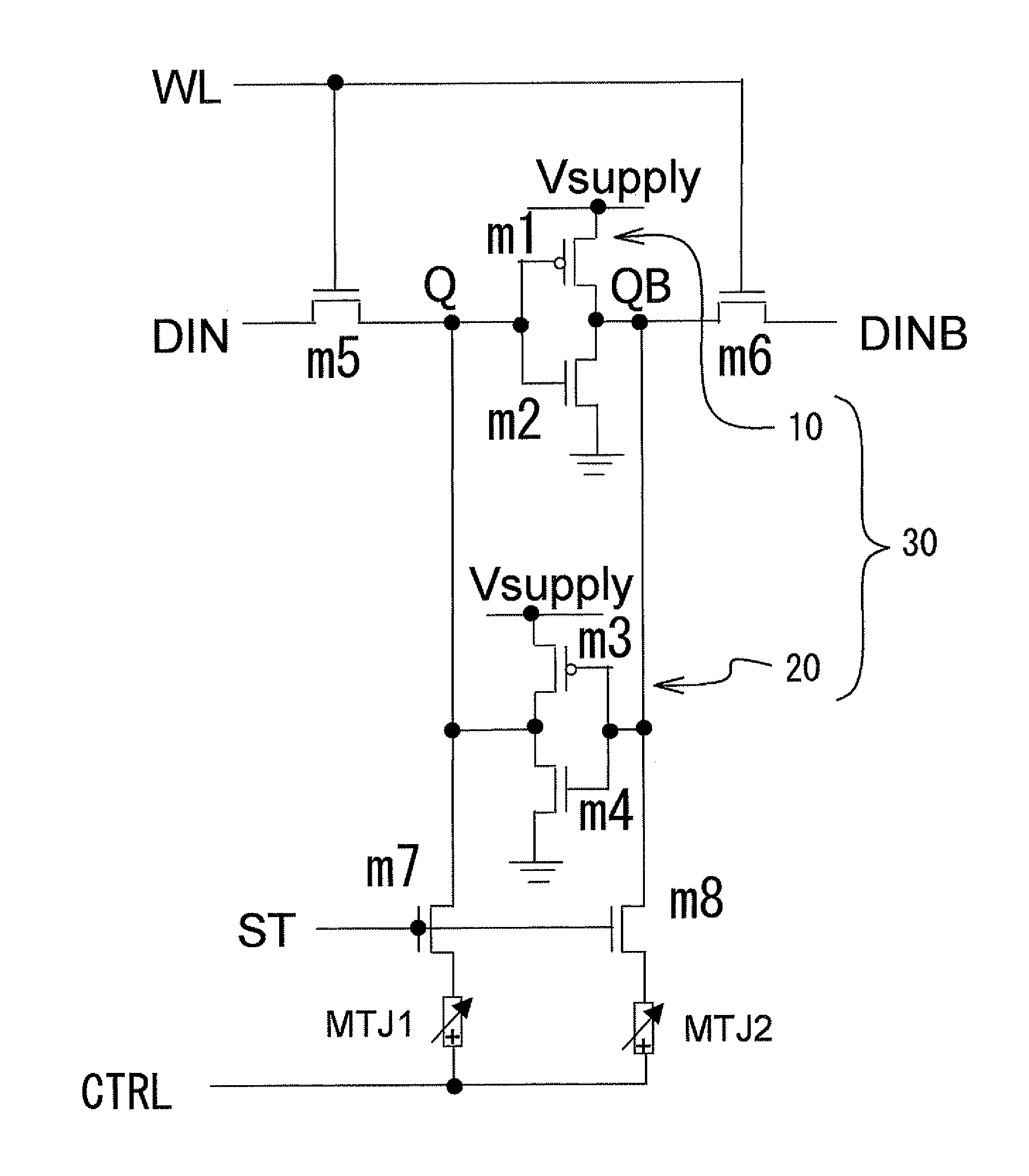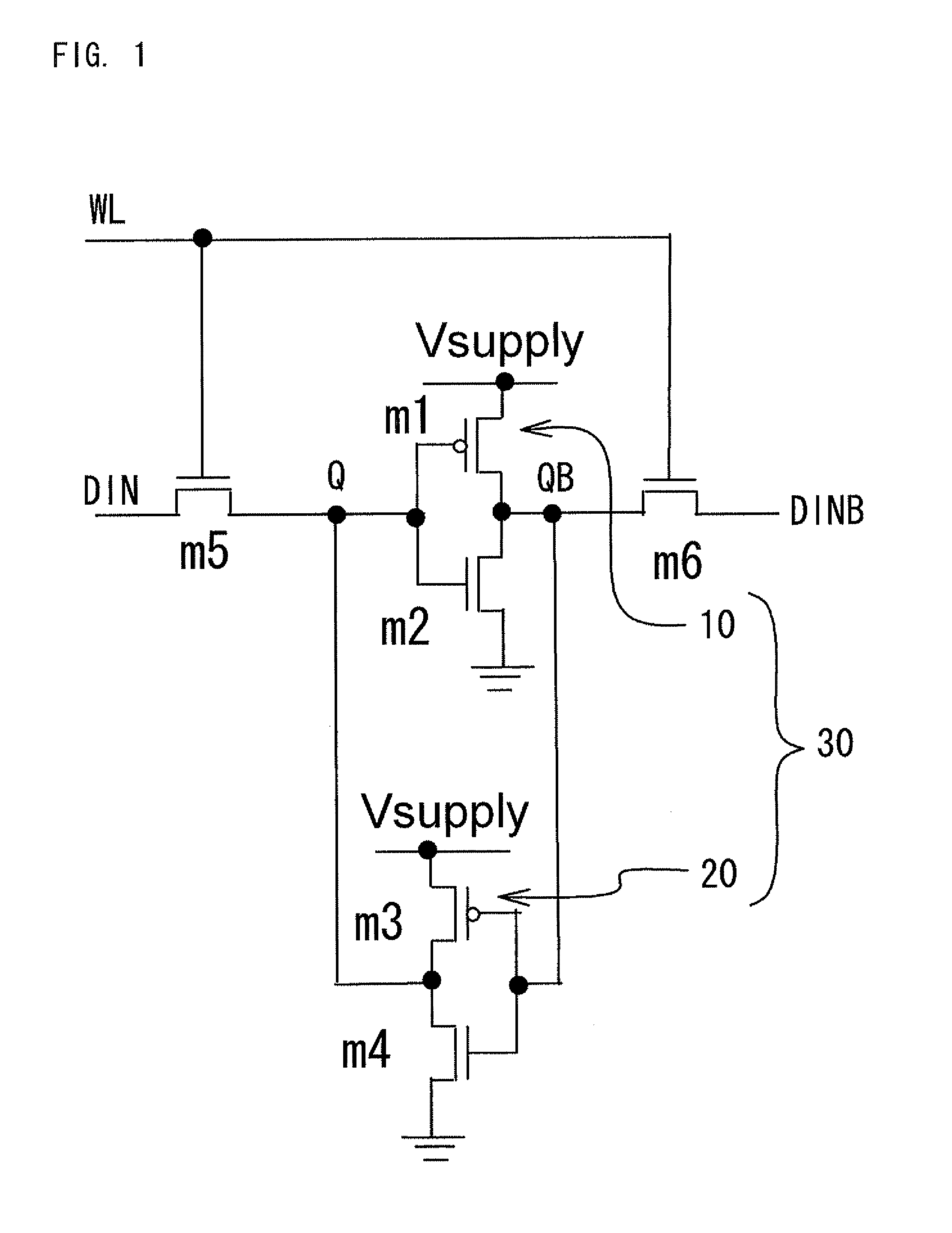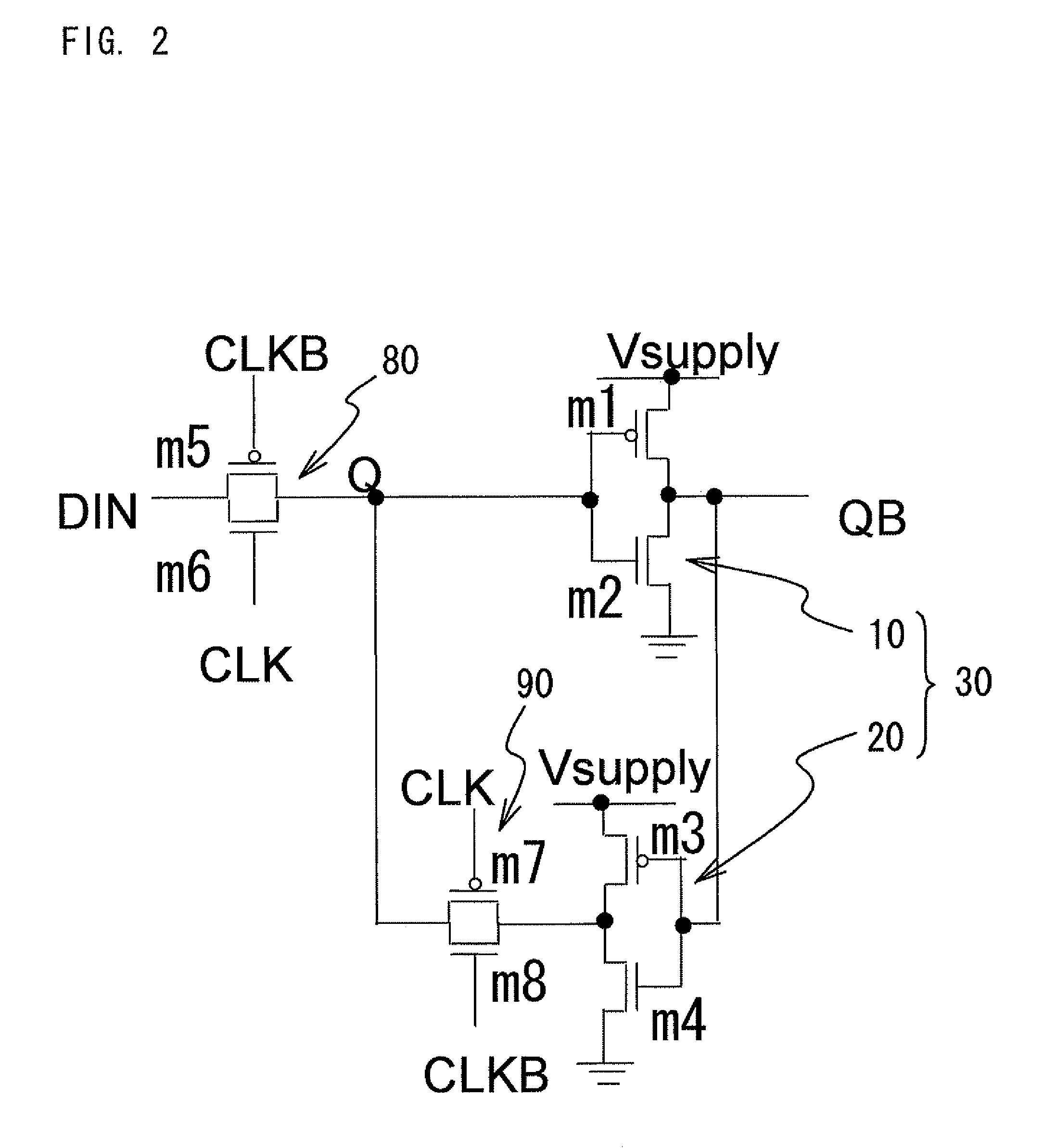Nonvolatile SRAM/latch circuit using current-induced magnetization reversal MTJ
a current-induced magnetization reversal, non-volatile technology, applied in the field of memory circuits, latch circuits, flipflop circuits, can solve the problems of volatile d latch circuits consuming power while, data stored in bistable circuits b>30/b> is lost, and sram consumes power, etc., to achieve high speed
- Summary
- Abstract
- Description
- Claims
- Application Information
AI Technical Summary
Benefits of technology
Problems solved by technology
Method used
Image
Examples
sixth embodiment
[0150]FIG. 23A and FIG. 23B are circuit diagrams of a memory circuit in accordance with the sixth embodiment. In the sixth embodiment, compared to the fifth embodiment, a resistance R1 contacts with a ground. Since data in the bistable circuit 30 is stored to the ferromagnetic tunnel junction device MTJ1, it is not necessary for the current to flow in the resistance R1 when the control line CTRL is high level. Therefore, a resistance R1 can contact with a ground. As same with the fifth embodiment, the resistance R1 is set to be between a high resistance Rap and a low resistance Rp. In addition, the FET m7 and the FET m8 can be provided as illustrated in FIG. 23A, and do not have to be provided as illustrated in FIG. 23B.
seventh embodiment
[0151]FIG. 24 is a circuit diagram of a memory circuit in accordance with the seventh embodiment. In the seventh embodiment, an output of an amplifier circuit 70 including a two-stage inverter composed of FETs m9 through m12 is coupled to the control line CTRL in FIG. 5 of the second embodiment. An external control line EXT-CTRL is coupled to an input of the amplifier circuit 70, If many memory circuits are controlled with the control line CTRL at the same time, operations will get slow. According to the seventh embodiment, the store and restoration in the memory circuit can be performed at high speed because a signal of the external control line EXT-CTRL is amplified by the amplifier circuit 70.
eighth embodiment
[0152]FIG. 25 is a circuit diagram of a memory circuit in accordance with the eighth embodiment. In the eighth embodiment, an n-type MOSFET m13 is coupled between the control line CTRL and a ground, and the gate of the FET m13 is coupled to the second control line RCL. FIG. 26 is a timing diagram of the memory circuit in accordance with the eighth embodiment. When storing, the level of the second control line RCL is at a low level. The FET m13 becomes non-conductive. Therefore, because one of nodes Q and QB has a high level potential and the other has a low level potential, the current flows between the ferromagnetic tunnel junction device MTJ1 and the ferromagnetic tunnel junction device MTJ2, and data in the bistable circuit 30 is stored to ferromagnetic tunnel junction devices MTJ1 and MTJ2. At this time, the voltage of the control line CTRL becomes interlevel between a high level and a low level. When restoring, the second control line RCL is at a high level. As the control line...
PUM
 Login to View More
Login to View More Abstract
Description
Claims
Application Information
 Login to View More
Login to View More - R&D
- Intellectual Property
- Life Sciences
- Materials
- Tech Scout
- Unparalleled Data Quality
- Higher Quality Content
- 60% Fewer Hallucinations
Browse by: Latest US Patents, China's latest patents, Technical Efficacy Thesaurus, Application Domain, Technology Topic, Popular Technical Reports.
© 2025 PatSnap. All rights reserved.Legal|Privacy policy|Modern Slavery Act Transparency Statement|Sitemap|About US| Contact US: help@patsnap.com



